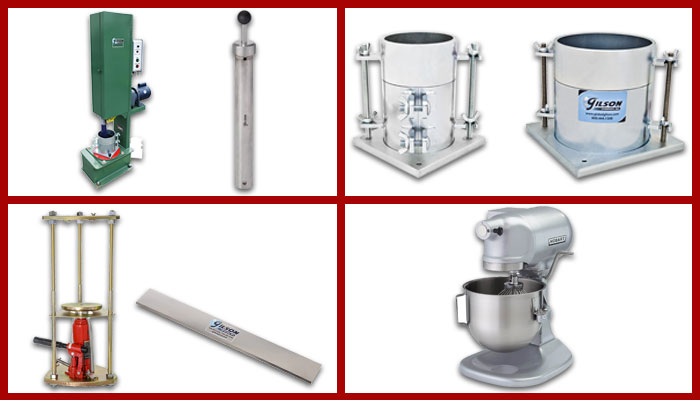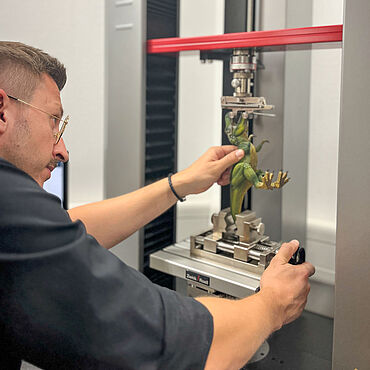Accuracy Perfected: Materials Test Lab Insights for Success
Wiki Article
Pressing Boundaries: Discovering Methods in Products Testing
Welcome to 'Pushing Borders: Discovering Methods in Materials Testing'. In this conference, we will look into the cutting-edge and cutting-edge methods used in the field of products screening. As innovation advancements, so does our ability to push the limits of what is possible in screening and analyzing various products. From sophisticated imaging modern technologies to high-throughput screening strategies, we will explore the most up to date strategies that enable us to get a deeper understanding of material homes and habits. Through non-destructive screening strategies and novel multi-scale evaluation techniques, we can reveal valuable understandings that can change sectors such as manufacturing, aerospace, and construction. Join us as we begin on a trip of exploration and exploration in the realm of materials testing.Advanced Imaging Technologies
Advanced imaging technologies have reinvented the field of products testing, allowing researchers to dive much deeper right into the architectural buildings of products. These sophisticated strategies have opened up new opportunities for researching and analyzing products, supplying important insights that were previously unattainable.One such sophisticated imaging innovation is X-ray calculated tomography (CT), which uses X-ray beams to produce 3D photos of the inner framework of materials. By capturing several X-ray pictures from various angles and rebuilding them, researchers can envision the interior features and defects of products with exceptional information. This non-destructive method is especially valuable for analyzing complex frameworks, such as composite materials or parts with elaborate geometries.

In addition, atomic force microscopy (AFM) has arised as an important tool for defining the surface properties of materials at the nanoscale. By checking a sharp probe across the material's surface area, AFM can gauge pressures and develop thorough topographic maps, providing beneficial info about surface roughness, mechanical buildings, and bond forces.
Cutting-Edge Simulation Techniques
A series of cutting edge simulation approaches are pushing the boundaries of materials testing, offering scientists unmatched insights into material actions. These cutting-edge simulation approaches employ advanced computational strategies to design and forecast the efficiency of products under different problems. By imitating the actions of materials at the atomic and molecular level, researchers can better understand the hidden devices that regulate product properties and performance.An additional effective technique is finite component evaluation (FEA), which separates an intricate structure or product right into smaller sized, extra convenient elements and evaluates their actions under various lots. FEA is widely utilized in design and materials science to study the response of materials to mechanical, thermal, and electromagnetic pressures.
Moreover, multiscale modeling integrates various simulation methods to connect the space in between atomistic and macroscopic ranges. By integrating information from different length scales, researchers can accurately forecast the actions of products under real-world problems.
These innovative simulation approaches are reinventing products screening by supplying insights that are impossible or or else difficult to get experimentally. They make it possible for researchers to optimize product style, discover new products, and boost the efficiency and dependability of existing materials in a large range of markets, from aerospace to biomedical.
Non-Destructive Examining Strategies

- Various non-destructive testing methods are employed in materials evaluating to check out the properties and integrity of products without causing damage. These methods play a crucial function in numerous markets, including aerospace, automotive, building and construction, and manufacturing, where the high quality and integrity of materials are extremely important.
One commonly made use of non-destructive testing strategy is ultrasonic testing. This technique involves sending high-frequency audio waves with a material and evaluating the echoes that recuperate. By gauging the time it takes for the echoes to return, professionals can determine the thickness of the material, discover internal flaws, and assess the total architectural integrity.
Another extensively used method is radiographic testing, which utilizes X-rays or gamma rays to inspect materials. This method is specifically efficient for identifying interior flaws such as gaps, splits, or additions. By subjecting the material to radiation and recording the resulting image on a movie or digital detector, specialists can evaluate the top quality and sturdiness of the material.
Other non-destructive testing techniques consist of magnetic bit testing, dye penetrant screening, and eddy existing screening. Each technique has its very own special advantages and appropriates for certain material kinds and applications.
High-throughput Screening Approaches
High-throughput screening techniques offer a detailed and efficient methods of examining products in huge quantities during the screening procedure. This strategy involves the simultaneous screening of many examples, enabling the fast recognition of products with desired qualities or buildings.Among the key advantages of high-throughput screening techniques is the capacity to examine a variety of products in a short amount of time. Conventional testing methods typically call for time-consuming and labor-intensive procedures, making it tough to review large numbers of samples. With high-throughput testing, researchers can quickly evaluate products on a scale that was formerly not possible.
Another advantage of high-throughput testing is its capability to determine materials with specific homes or qualities. By evaluating a multitude of samples, scientists can identify materials that display details buildings, such as high strength or excellent conductivity. This enables researchers to tailor materials for particular applications or markets.
High-throughput testing techniques Click This Link additionally permit for the exploration of brand-new products with one-of-a-kind properties. By testing large quantities of materials, researchers can reveal products that show unique features or actions. This can lead to the development of brand-new products that have a variety of applications, from advanced electronic devices to power storage space.
Unique Multi-scale Evaluation Approaches
The execution of unique multi-scale evaluation techniques improves the precision and accuracy of products examining procedures. By integrating multiple ranges of evaluation, researchers are able to obtain an extra comprehensive understanding of the actions and properties of products. Standard materials examining approaches typically concentrate on macroscopic learn the facts here now properties, yet these techniques fail to record the complex details and communications that happen at smaller sized scales.One example of an unique multi-scale analysis approach is using computational modeling. By simulating the habits of materials at various scales, scientists can anticipate and comprehend their mechanical, thermal, and chemical properties. This enables more exact predictions and optimizations of product efficiency.
One more approach includes making use of sophisticated imaging strategies, such as electron microscopy and atomic force microscopy - materials test lab. These strategies enable scientists to visualize and evaluate products at the nanoscale, offering understandings right into their microstructure and structure. By incorporating these observations with macroscopic screening information, a more total photo of the material's habits can be gotten
Furthermore, the combination of machine knowing algorithms and information analytics in materials testing has actually additionally improved the accuracy of evaluation. These approaches can recognize patterns and correlations in big datasets, permitting for faster and more efficient analysis of materials buildings.
Conclusion
To conclude, the expedition of methods in products screening has actually brought about significant her response developments in different areas. Advanced imaging innovations have actually enabled thorough evaluation and visualization of product frameworks. Sophisticated simulation approaches have actually promoted the forecast and understanding of product actions. Non-destructive screening strategies have actually allowed the examination of product stability without creating damage. High-throughput testing techniques have actually increased the exploration of new products. Unique multi-scale evaluation techniques have provided understandings right into material residential or commercial properties at different ranges. These innovations have pushed the borders of products testing and led the way for additional research and innovation.
A variety of state-of-the-art simulation techniques are pushing the limits of materials testing, supplying researchers extraordinary understandings right into material actions (materials test lab). By mimicing the actions of materials at the molecular and atomic level, scientists can better comprehend the hidden mechanisms that control product residential properties and performance
Various non-destructive screening techniques are utilized in products testing to take a look at the properties and stability of products without causing damage. By subjecting the product to radiation and capturing the resulting image on a film or electronic detector, technicians can assess the top quality and soundness of the material.
By evaluating big amounts of products, researchers can uncover materials that display unique features or actions.
Report this wiki page